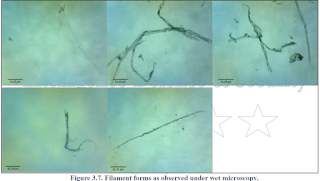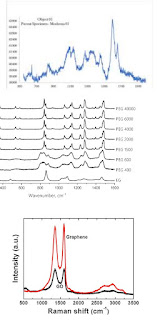Tuesday, February 15, 2022
No, a recent report has NOT found Graphene in COVID vaccines
The idea that COVID vaccines contain the nano-particle material graphene is a particular myth that refuses to go away. While graphene has a number of desirable properties in biomedical applications, it is not yet used in vaccines.
However, a new "report" claims that they have found "graphene" in vials of Pfizer, Moderna and Astra-Zenia COVID vaccines. TL;DR this is nonsense on stilts. Why? let me explain.
As a bit of background, I am a biomedical scientist. I have a lot of expertise in optical microscopy (bright field, fluorescence) and some expertise in electron microscopy. I also have expertise in UV-visible spectroscopy and experience with Nuclear magnetic Resonance and Mass Spectroscopy (although the latter is usually me nodding at my collaborators spectra trying to look intelligent).
With that background, let look at the "report", "Qualitative Evaluation of Inclusions In Moderna, AstraZeneca and Pfizer Covid-19 vaccines.". It uses two techniques to find "graphene" in the vaccines, optical microscopy and Raman spectroscopy.
Optical microscopy:
The problem with optical microscopy is that nano-materials are, well, nano, with sizes typically below the resolution threshold of optical instruments. The "report" says that aliquots of vaccine were placed on "clean" slides, dried, then cover slips placed on them. No details are given on how the slides were cleaned, if the cover-slips were cleaned, and what mounting medium was used.
Looking at the images I see the typical junk that ends up on slides (even cleaned ones and we use acid washing with ethanol rinses on the slides and cover-slips). Stray fibers and the agglomerations you get from drying complex solutions (particularly with lipids, the lipid nano-particles will aggregate as they dry into little blobs of fat). The "carbon nano-ribbons" (Figure 3.1) are not nano (approximately 7 µm in diameter), and the images in 3.2 are definitely not nano (15 µm across) and are the typical junk that accumulates of slides and cover-slips.
Figure 3.7 from the report, this is the typical non-nano junk every optical microscopist is familiar with.These random blobs and fibers are all (aside for some described as calcite) described as graphene with out any good evidence. Which brings me to Raman spectroscopy.
Raman Spectroscopy:
Spectroscopy of any sort of complex mixtures, like vaccines, is fraught with difficulties. Multiple components can interfere with each other and you can find peaks where you don't expect peaks. The "report" shows numerous Raman spectra, but they are all uniformly awful.
in this image (click to embiggen) I have posted the best spectrum from figure 3.11 (labelled "graphene with polyethylene glycol") above the spectra for polyethylene glycol (the PEG used in vaccines is PEG2000) and Graphene and graphene oxide (GO). The scales for the Raman shift are different in all the images, I can't do much about that. But the main thing is too look at the patterns.
The reports figure is very poor quality, so being sure of the peak locations is difficult but there are peaks around 800, 1100 and 1400 Raman shifts (cm-1) the may correspond to the 830, 1108 and 1470 peaks for PEG. There are a bunch of other peaks that don't quite fit with PEG (eg the peak around 1700 cm-1).
Graphene and Graphene oxide (GO) have distinct peaks at 1354 and 1591 (cm-1). There is a peak in the mess that is around 1600 cm-1 but the 1354 peak is missing.
So, no graphene.
Summary:
The "evidence" for graphene in the vaccines is random fibers and blobs which are not nano-scale, and poor resolution Rama spectra which don't show the spectral signature of graphene.
So no graphene in vaccines.
Given the poor image resolution the amateurish backgrounds and the obvious artefacts, the heading of "Global Humanitarian Crisis Prevention and Response Unit" on every page with a terrible graphic logo, I can't help but wonder if this is some sort of joke.
EDIT:
Labels: Pseudoscience, public outreach, science matters, vaccines






 Click to read about or order
Click to read about or order Click to read about or order
Click to read about or order Click to read about or order
Click to read about or order Click to read about or order
Click to read about or order




